New Update: Boost Social Proof with Reviews & Automation
New Update: Boost Social Proof with Reviews & Automation
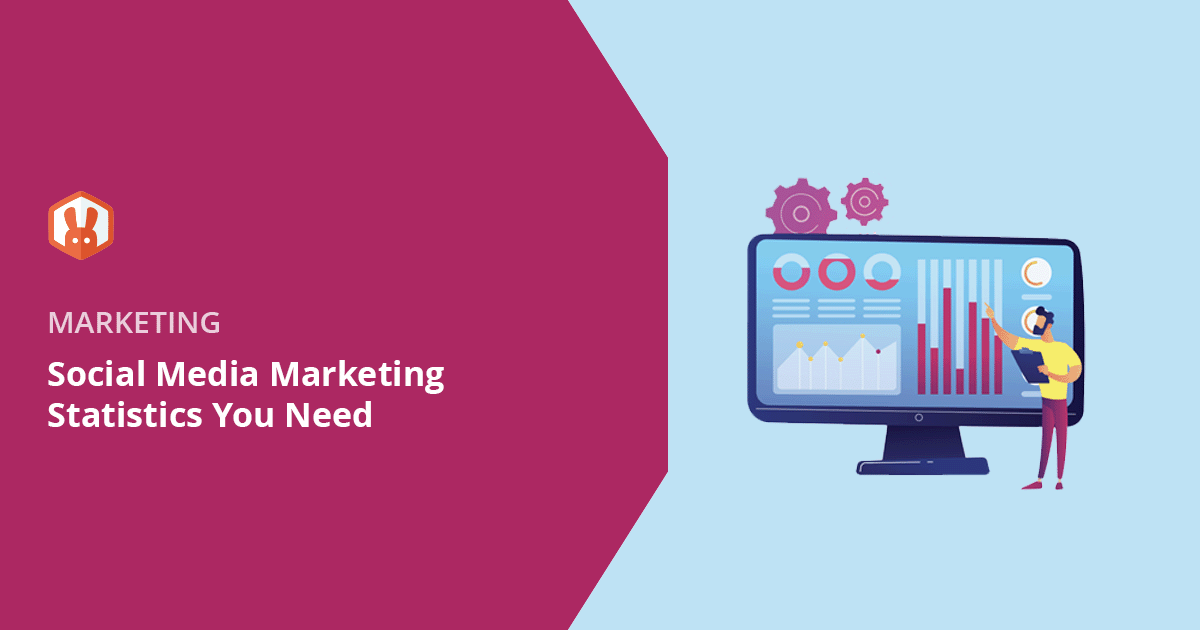
 John Turner
John Turner
 John Turner
John Turner
Do you want better social media results in 2025? I’ve been in digital marketing for a long time, and things have changed a lot.
Remember when Instagram was new? It was all about simple photos with filters. Now, we have TikTok, YouTube, and many other platforms to manage, which can be a challenge.
New platforms appear, and online habits change quickly. But, having the latest statistics makes a big difference in helping you market your business better.
That’s why I’m sharing the key social media marketing statistics you need to know. With this data, you can connect with more people and increase sales for your business.
Social Media Marketing Statistics:
Social media is a big part of everyone’s lives now. But how big is it really?
Over 5.52 billion people around the world are online – that’s about 67.5% of all the people on Earth. Just think: you could reach more than half the people on Earth from your computer or phone.

And it gets even bigger. More than 5.22 billion people use social media. And 256 million new users started just last year. That’s millions of new customers who might like what your business sells.
People spend about 2 hours and 19 minutes each day on social media. That’s about 14% of their time awake. Imagine getting some of that time with good content that connects with them.
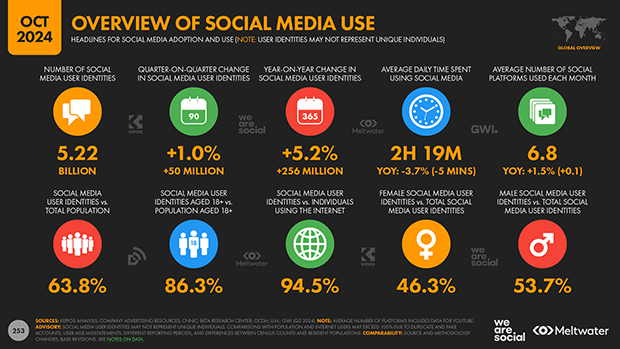
These numbers show how important social media is for businesses like yours. If you use it the right way, you can reach lots of people, build a loyal group of customers, and get more sales.
Now that we’ve seen how big social media is, let’s look at which platforms people use the most.
Top Social Media Platforms by Monthly Active Users (MAU):
| Platform | Monthly Active Users |
|---|---|
| 3.065 billion | |
| ~3 billion | |
| YouTube | 2.5 billion |
| 2 billion | |
| TikTok | 1.69 billion |
| X (formerly Twitter) | 611 million |
| Sina Weibo | 598 million |
Source: Statista [1]
These platforms have billions of users. That means a huge audience is waiting to see what your business has to offer.
Let’s take a closer look at each one.
Facebook has 3.065 billion [1] users worldwide, making it the largest social media platform. That’s nearly half of the world’s population. Imagine the potential audience you could reach with your business on Facebook.
India leads the way with over 320 million Facebook users, more than any other country. This large user base makes India a key market for businesses wanting to expand their reach.

Who Uses Facebook?
In the U.S., the largest group of Facebook users is aged 25 to 34 (24.2% of users). 12.3% are women. Users aged 35 to 44 make up 19%.
But how exactly do these people use the platform? The Facebook usage stats [2] show the following:
What Does This Mean for Your Business?
Facebook is a great place to connect with customers and share updates about your business. Since over half of the users follow or research brands, there’s a good chance they’ll be interested in what you have to offer.
Whether you’re posting engaging content, sharing exciting news, or interacting with customers, Facebook gives you a place to build relationships and grow your business.
For more ideas to get started, see our Facebook marketing tips for small businesses.
YouTube has between 2.5 and 2.7 billion users [1], making it one of the most popular platforms for video content. That’s a huge audience ready to watch interesting videos.
India has the most YouTube users, with 476 million people watching, followed by the United States with 238 million users. This reach means your business can connect with people all over the world through YouTube.

Who Uses YouTube?
Many YouTube users are aged 25 to 34, with 12.1% men and 9.4% women. There’s also a large number of users aged 35 to 44.
But what are people watching on YouTube? The YouTube usage stats are impressive:
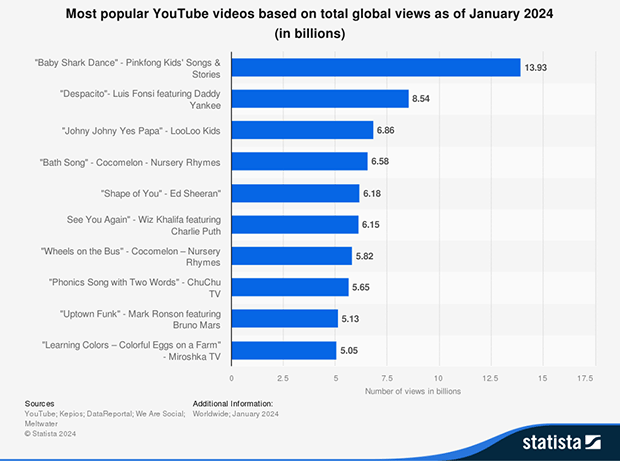
What Does This Mean for Your Business?
If your business can create good video content, YouTube is a great place to reach a big audience. Whether it’s product demos, tutorials, or stories, videos can help show off your brand and connect with customers in a fun way.
One of my favorite ways to create great YouTube content that drives views, is with a giveaway. Check out this guide on running a YouTube giveaway to get started.
WhatsApp has about 3 billion users worldwide, making it one of the most used messaging apps. Imagine being able to talk directly with such a big group of people.
India has the most WhatsApp users, showing how popular the app is in important international markets.
Who Uses WhatsApp?
WhatsApp’s demographics are almost split equally between men and women. 52.2% are men and 47.7% are women.

They mostly use the app for quick and easy chats. In fact, users usually reply in less than a minute. Most activity happens from noon until midnight.
What Does This Mean for Your Business?
WhatsApp is a great way to offer customer support or send updates right to your customers. It’s quick and personal, which helps you build strong relationships and give great service.
Instagram has 2 billion users [1], making it a powerful place for visual content and engagement.
India has over 360 million Instagram users, showing that the platform is very popular around the world.
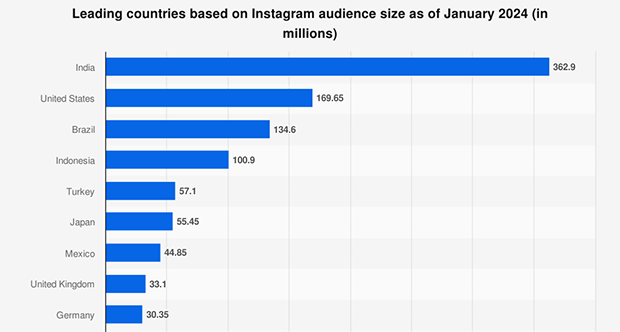
Who Uses Instagram?
Over 50% of Instagram’s users are 34 or younger, and most of them are women. Only 16.5% of them are men aged 18 to 24.
But how do people use Instagram? Here’s what the numbers show:
What Does This Mean for Your Business?
If your business has visual content to share, Instagram is a perfect place to show it off. You can build your brand, connect with a younger audience, and even sell products directly through the app.
If you don’t have the budget to spend on Instagram ads, this guide on promoting your business on Instagram for free will help.
TikTok has around 1.69 billion users [1] and has quickly become a global hit with its short videos.
Indonesia has about 157.6 million TikTok users, and the United States is close behind with 120.5 million users.
Who Uses TikTok?
Like WhatsApp, it’s almost an even split between men and women on TikTok [2]. Men make up 56.2% of users, while women make up 43.8%.

But what makes TikTok so fun? The stats show that it’s all about:
What Does This Mean for Your Business?
TikTok is a great chance to reach a younger, very active audience with creative and fun content. If your business is ready to try new things and make trendy videos, TikTok could be a game-changer for your marketing.
This detailed guide has everything you need to know how to market your business on TikTok.
These days, almost everyone uses their phone to go on social media. But how important is mobile really?
A huge 91% of social media users use their phones to access social media. That means most people are on their phones when they’re checking social media.
When it comes to Facebook, over 98% of users use their phones to access it. So if your content doesn’t work well on phones, you could be missing out on reaching almost all Facebook users!
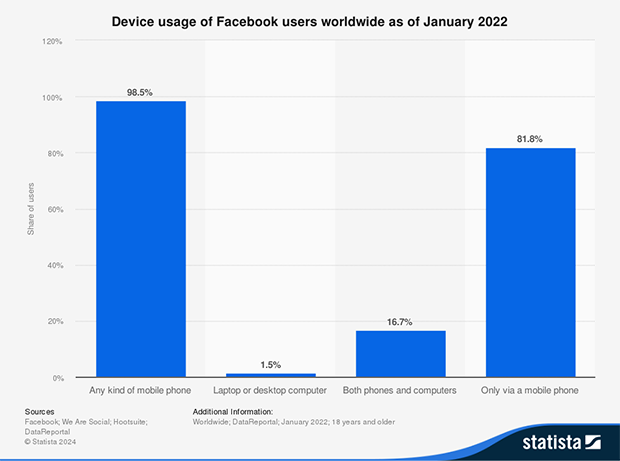
Mobile devices are also key for online shopping. In the third quarter of 2024, smartphones made up 77% of retail site traffic around the world and were responsible for 68% of online shopping orders. That’s a lot of e-commerce happening right from people’s phones.
For younger users, mobile is even more important. Among Gen Z internet users, a whopping 94.8% access social media on their phones. If you’re trying to reach a younger audience, focusing on mobile is a must.
What Does This Mean for Your Business?
Making sure your content works well on mobile devices is really important. If your website, ads, or social media posts don’t look good or load quickly on a phone, you might lose potential customers.
Focus on:
By focusing on mobile users, you can reach more people, make their experience better, and get more sales for your business.
Social media isn’t just a place to connect with friends and family; it’s also a powerful way for businesses to reach new customers and grow.
Social media ads make up 28.8% of all digital ad spending. That means almost a third of all money spent on digital ads goes to social media platforms. This shows how important social media is for businesses wanting to advertise online.
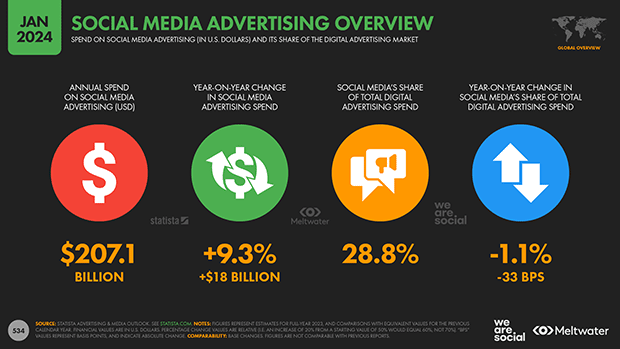
Global social media ad spending is expected to reach $234.14 billion, which is a 10.54% increase from the year before. More and more businesses are investing in social media ads because it works.
So, why are businesses spending so much on social media ads? Because it works!
These numbers show that social media is a great way to get your business noticed and find potential customers.
Another important trend is using video in marketing. A huge 91% of businesses use video in their marketing plans. Videos are interesting and can help you explain your products or services better than just text or images.
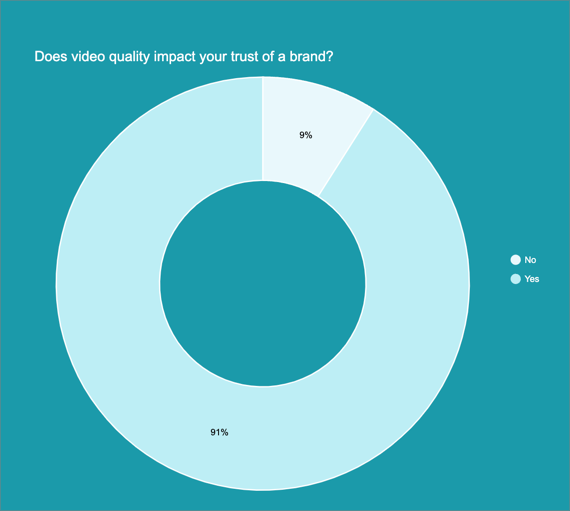
Social commerce is also becoming more popular. This means selling products directly through social media platforms. Social commerce is expected to grow by 31% each year. Platforms like Facebook, Instagram, and even TikTok are adding features that let customers buy products without leaving the app.
What Does This Mean for Your Business?
By keeping up with these trends and using social media marketing and advertising effectively, you can reach more people, grow your customer base, and increase your sales.
Connecting with your audience on social media is more important than ever. But which platforms have the most engagement, and how does it affect your business?
According to marketers, YouTube, Instagram, and Facebook have the highest audience engagement rates, with 23%, 23%, and 22% respectively. This means these platforms are great places to talk with your customers and build relationships.
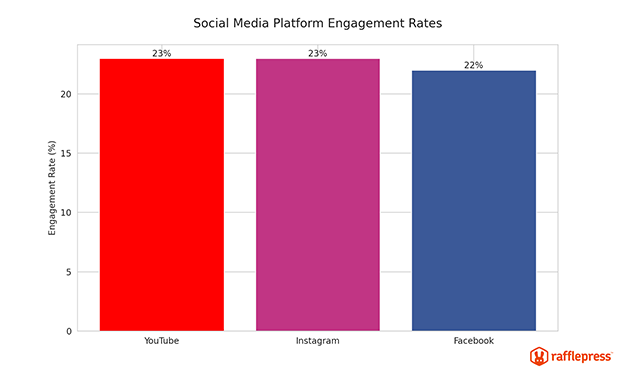
But why is engagement so important?
This shows that talking with your customers on social media can lead to more loyal customers and word-of-mouth promotion.
Also, customers tend to spend 20-40% more on brands that answer their customer service questions on social media. That’s a big increase in sales just by providing good customer service online.
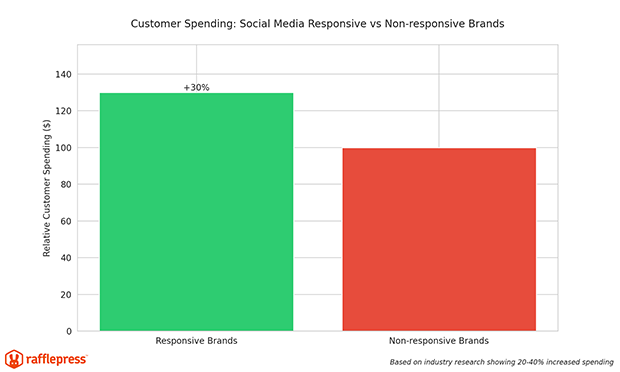
But timing is really important:
What Does This Mean for Your Business?
By focusing on engagement and customer experience, you can build a loyal community around your brand, increase customer satisfaction, and boost your sales.
Did you know that using social media for sales can help you find more customers and increase your revenue? This is called social selling, and it’s a powerful way for businesses like yours.
Here are some important stats about social selling:
What Does This Mean for Your Business?
Using social media for selling isn’t just about posting ads. It’s about:
By using social selling, you can find more chances, connect with customers, and increase your sales.
Social media is more important than ever for businesses like yours. With billions of users spending hours each day on platforms like Facebook, YouTube, WhatsApp, Instagram, and TikTok, there’s a huge audience waiting to discover your brand.
So, what should you do next?
By taking these steps, you can use the great potential of social media, connect with more people, and get more sales for your business. The world of social media is big and always changing, but with the right plans, you can do well and watch your business grow.
Need help growing your social media presence?
Check out RafflePress, the best WordPress giveaway plugin that helps you grow your email list, website traffic, and social media followers with viral giveaways and contests.
Disclosure: Our content is reader-supported. This means if you click on some of our links, then we may earn a commission. We only recommend products that we believe will add value to our readers.
Copyright © 2024 SeedProd LLC. RafflePress® is a registered trademark of SeedProd LLC